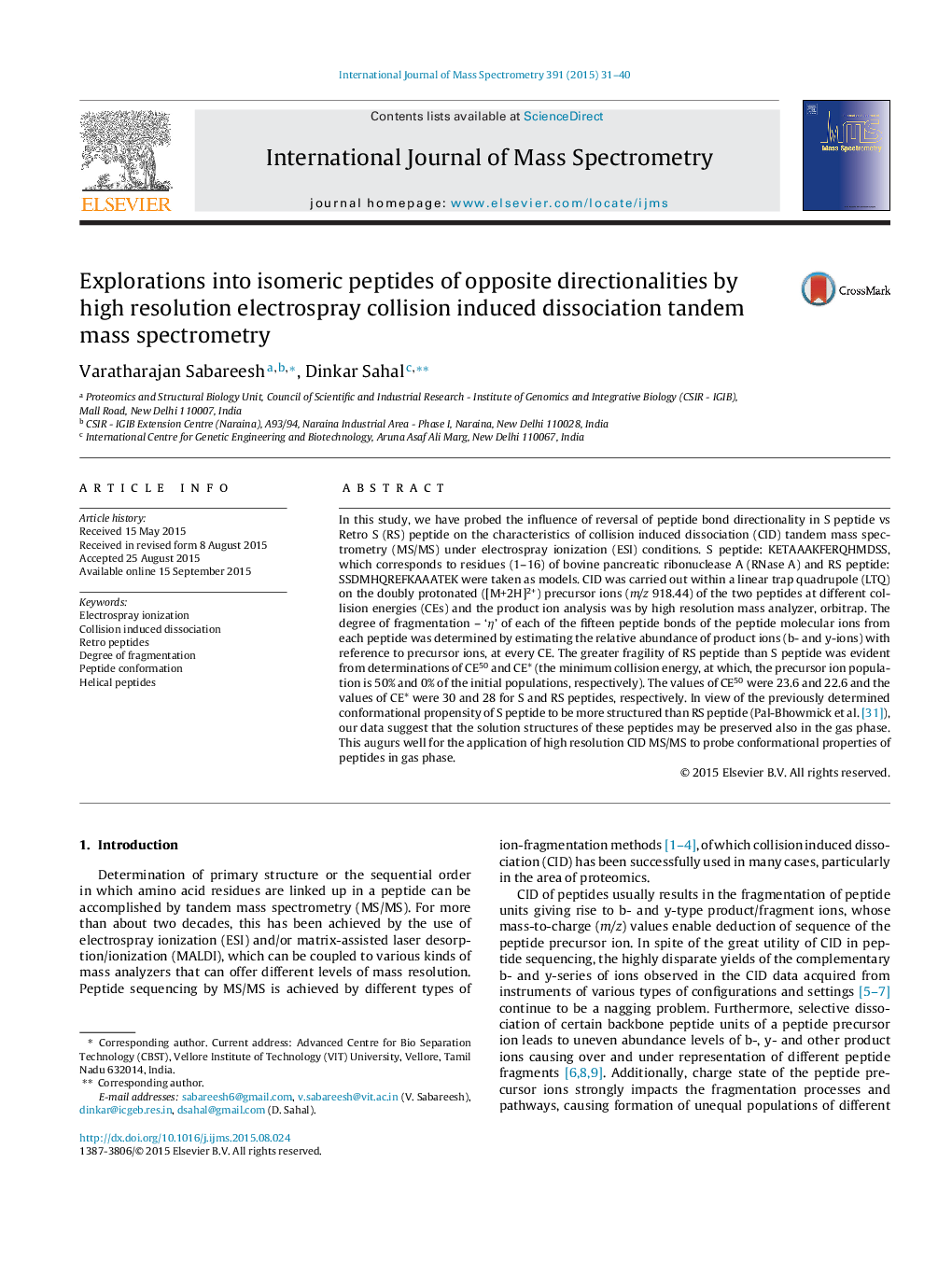| Article ID | Journal | Published Year | Pages | File Type |
|---|---|---|---|---|
| 7604254 | International Journal of Mass Spectrometry | 2015 | 10 Pages |
Abstract
In this study, we have probed the influence of reversal of peptide bond directionality in S peptide vs Retro S (RS) peptide on the characteristics of collision induced dissociation (CID) tandem mass spectrometry (MS/MS) under electrospray ionization (ESI) conditions. S peptide: KETAAAKFERQHMDSS, which corresponds to residues (1-16) of bovine pancreatic ribonuclease A (RNase A) and RS peptide: SSDMHQREFKAAATEK were taken as models. CID was carried out within a linear trap quadrupole (LTQ) on the doubly protonated ([M+2H]2+) precursor ions (m/z 918.44) of the two peptides at different collision energies (CEs) and the product ion analysis was by high resolution mass analyzer, orbitrap. The degree of fragmentation - 'η' of each of the fifteen peptide bonds of the peptide molecular ions from each peptide was determined by estimating the relative abundance of product ions (b- and y-ions) with reference to precursor ions, at every CE. The greater fragility of RS peptide than S peptide was evident from determinations of CE50 and CE* (the minimum collision energy, at which, the precursor ion population is 50% and 0% of the initial populations, respectively). The values of CE50 were 23.6 and 22.6 and the values of CE* were 30 and 28 for S and RS peptides, respectively. In view of the previously determined conformational propensity of S peptide to be more structured than RS peptide (Pal-Bhowmick et al. [31]), our data suggest that the solution structures of these peptides may be preserved also in the gas phase. This augurs well for the application of high resolution CID MS/MS to probe conformational properties of peptides in gas phase.
Related Topics
Physical Sciences and Engineering
Chemistry
Analytical Chemistry
Authors
Varatharajan Sabareesh, Dinkar Sahal,
